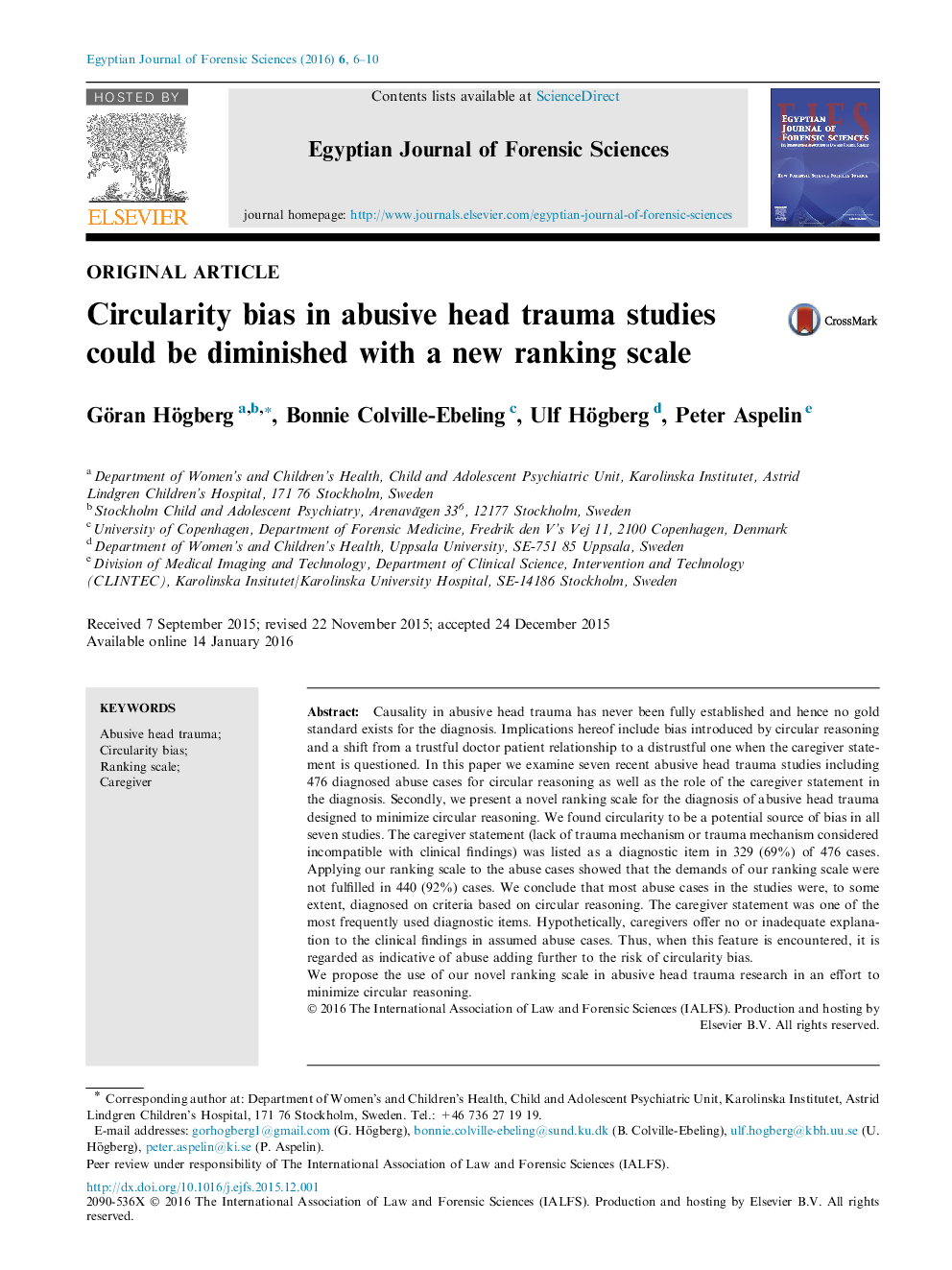| Article ID | Journal | Published Year | Pages | File Type |
|---|---|---|---|---|
| 1097484 | Egyptian Journal of Forensic Sciences | 2016 | 5 Pages |
Causality in abusive head trauma has never been fully established and hence no gold standard exists for the diagnosis. Implications hereof include bias introduced by circular reasoning and a shift from a trustful doctor patient relationship to a distrustful one when the caregiver statement is questioned. In this paper we examine seven recent abusive head trauma studies including 476 diagnosed abuse cases for circular reasoning as well as the role of the caregiver statement in the diagnosis. Secondly, we present a novel ranking scale for the diagnosis of abusive head trauma designed to minimize circular reasoning. We found circularity to be a potential source of bias in all seven studies. The caregiver statement (lack of trauma mechanism or trauma mechanism considered incompatible with clinical findings) was listed as a diagnostic item in 329 (69%) of 476 cases. Applying our ranking scale to the abuse cases showed that the demands of our ranking scale were not fulfilled in 440 (92%) cases. We conclude that most abuse cases in the studies were, to some extent, diagnosed on criteria based on circular reasoning. The caregiver statement was one of the most frequently used diagnostic items. Hypothetically, caregivers offer no or inadequate explanation to the clinical findings in assumed abuse cases. Thus, when this feature is encountered, it is regarded as indicative of abuse adding further to the risk of circularity bias.We propose the use of our novel ranking scale in abusive head trauma research in an effort to minimize circular reasoning.
